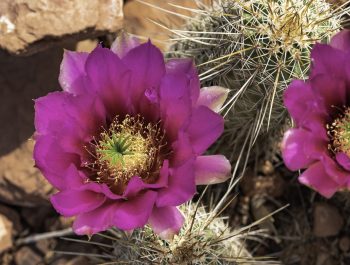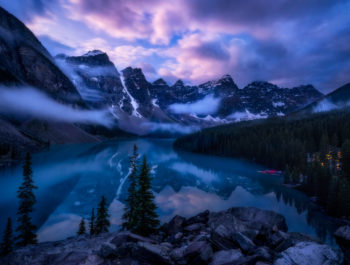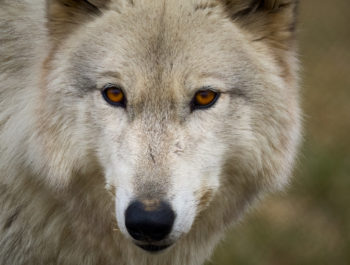The Sony Alpha 1 (a1) – A New Standard for Image Quality & Capture
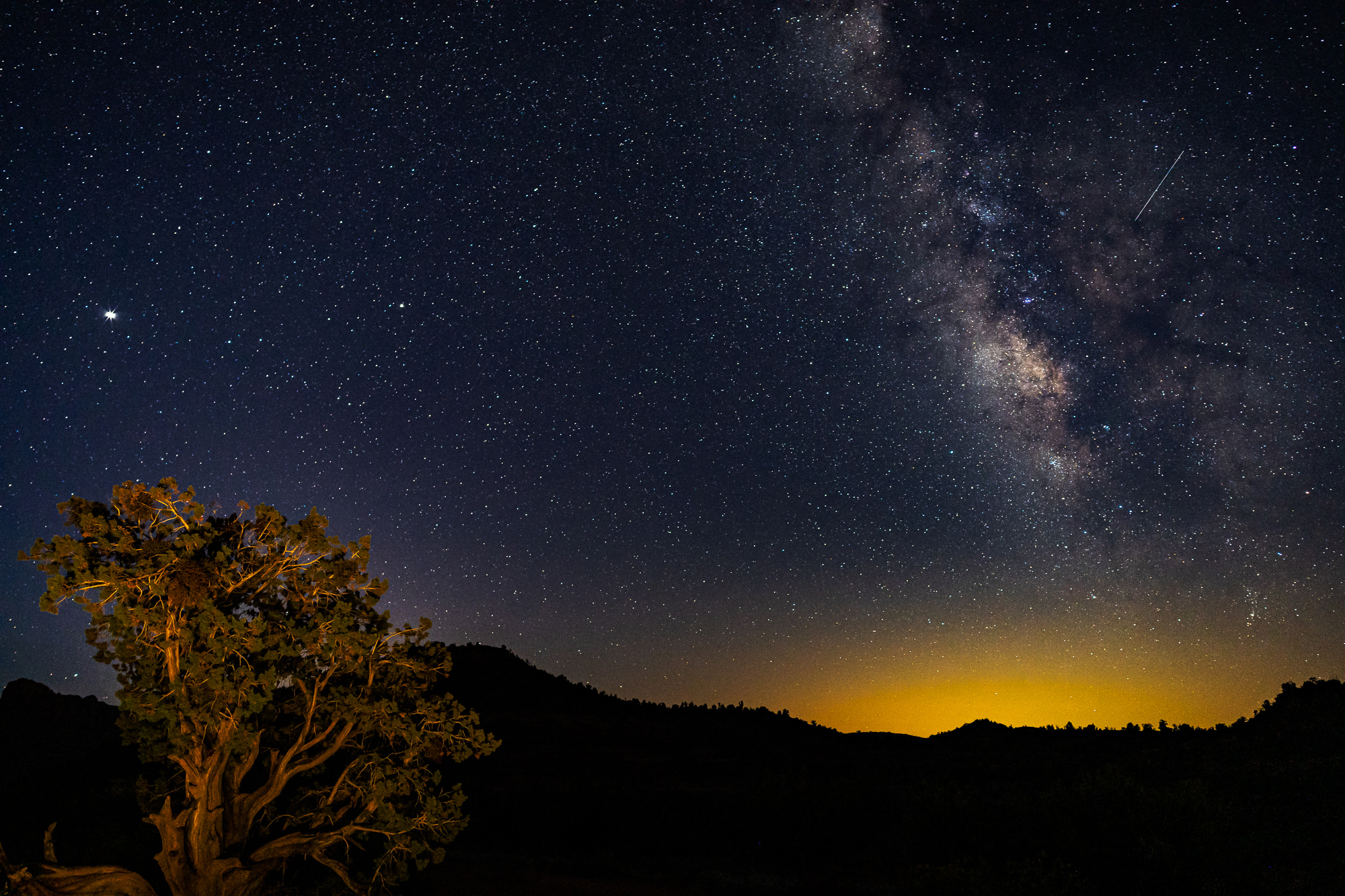
If you are a Silver or Gold member you can click on any image to see larger and zoom in.
This series on Image Quality (IQ) was previously intended to consist of three parts and was inspired by Sony’s release (and my purchase) of the Sony 7r-M4 60 megapixel camera. At that time, I didn’t think that subsequent mirrorless cameras would improve sufficiently for me to buy another one, at least not for some years.
I should have known better. Not only has Sony has continually outperformed expectations, but, they’ve managed to do it in record time, and once again, caught everyone by surprise. Like other photographers, after reading the specs and reviewing the sample images I was stunned. For me, the $6,500.00 price that most reviewers listed as a serious drawback mattered little if this camera could live up to the hype. (Actually, I remember paying $8,000 ten to twelve years ago for flagship Canon and Nikon DSLR’s which couldn’t match today’s technological capabilities.)
Whereas I viewed the Sony A7rM4 as the camera that would give me the capability that I wanted to consistently produce high-quality images, the Alpha 1 appeared to be a tool that could both stretch my creativity in image-making, and could also motivate me to become proficient in other photographic areas like video. It was a challenge that couldn’t be passed up.
I have owned my A1 since mid-March 2021. Though serious photography trips won’t take place for me until late June and most of September, I have taken enough images with the A1 to get a good idea of this camera’s capabilities; and this camera is genuinely awesome. For those who haven’t followed Sony’s recent history, Sony’s objective to produce professional mirrorless cameras has proceeded along three lines of attack. Different versions of the mirrorless A series were designed and serially improved to appeal to the following market segments:
- Outdoor photography including landscapes (the A7r series).
- Action photography: single exposures and videos of active wildlife and sports (A9 series)
- Low light still and video capture of indoor and nighttime events (A7s series).
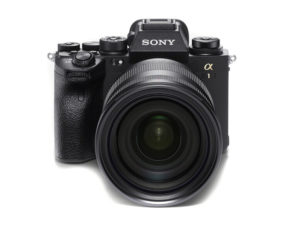
After several years of improving cameras in all three lines, Sony decided to produce a camera that could handle the requirements of all three capture genres. But, the real surprise was that the Alpha 1 capability and performance is notably superior to that of each of the three specialized cameras, as many recent reviews have indicated. Obviously, in the limited time that I’ve had to really put the A1 through its paces, I’m a long way from being able to cover the full gamut. However, from what I’ve experienced so far, this camera generates an enormous comfort level that whatever image capture goals I set for any given photography outing will be fully met by the end of the trip. Add in pro-level weather-proofing, fast handling, and ruggedness, and that confidence level soars.
So, the following is what I have observed so far. Paired with the best lenses available, the Image Quality output of the A1 is extremely high. Along with its portability and versatility, an Alpha 1 camera with top-quality lenses provides a system that is currently unmatched. Some medium format cameras offer higher resolution but are limited in focal length range, portability, and response time. I can already see that the Sony Alpha 1 will enable photographers to produce top-quality images at significantly higher success ratios. Alpha I output is characterized by brilliant, accurate color, controlled contrast within a wide dynamic range, and enough fine detail to satisfy almost any photographer.
The rest of this article is organized to illustrate A1 performance broken down by major components of image quality (IQ). These include:
- Resolution
- Color accuracy & clarity
- Dynamic Range
- Low light image integrity
- High-speed image capture
Again, my early conclusions are based on my limited image production to date. But, this will change when I will be making thousands of exposures with my Alpha 1 in Montana and Wyoming throughout this coming September. This is also why I am no longer placing any limit on the number of future articles on the subject of IQ.
Resolution
The ability of a photographic medium to resolve fine detail has long been a key aspect of image quality going back to the first camera in 1840. This is not the same thing as sharpness which is more a matter of edge contrast, and which is often manipulated in post-production. It is closely related to the amount of information captured in each small spatial increment of a photo-sensitive medium. For electronic sensors, it is the number and quality of pixels contained in the sensor area. A 35mm-sized sensor (1.5” by 1”) of 60 MP has a moderately higher resolution than the same sized sensor containing 50 MP. But, in same-size sensors with higher pixel counts, geometry necessarily reduces the size of each pixel which can increase heat buildup and noise.
With the best resolving lenses, the Sony A7rM4 60MP sensor can produce excellent IQ with more resolution than the Sony Alpha 1. However, my experience has been that at ISO’s greater than 1250, the smaller-sized photo-sites in the A7rM4 generate more noise in the shadows and dark tones than produced by the Alpha 1 at the same ISO. This is a long-observed phenomenon. The more photosites squeezed into the same space, the more heat buildup occurs due to the greater “density” of data storage and transmission.
In designing the Alpha 1 sensor, Sony wisely cut back on the number of pixels from 60 to 50. At the same time, they further refined the circuitry of their partially stacked sensors to spread data transmission from the sensor to storage media over more conduits to reduce transmission time and heat buildup and therefore noise. Newer processors allow the Alpha 1 to process data faster, also lowering heat buildup. The end result is higher framing rates and lower noise at higher ISO’s than what the A7rM4 can produce. This also translates to cleaner dark tones ranging from light shadows to near black.
The following six images demonstrate a high megapixel count of very high quality. Not only does this help produce more detailed images, it also improves the quality of the detail.
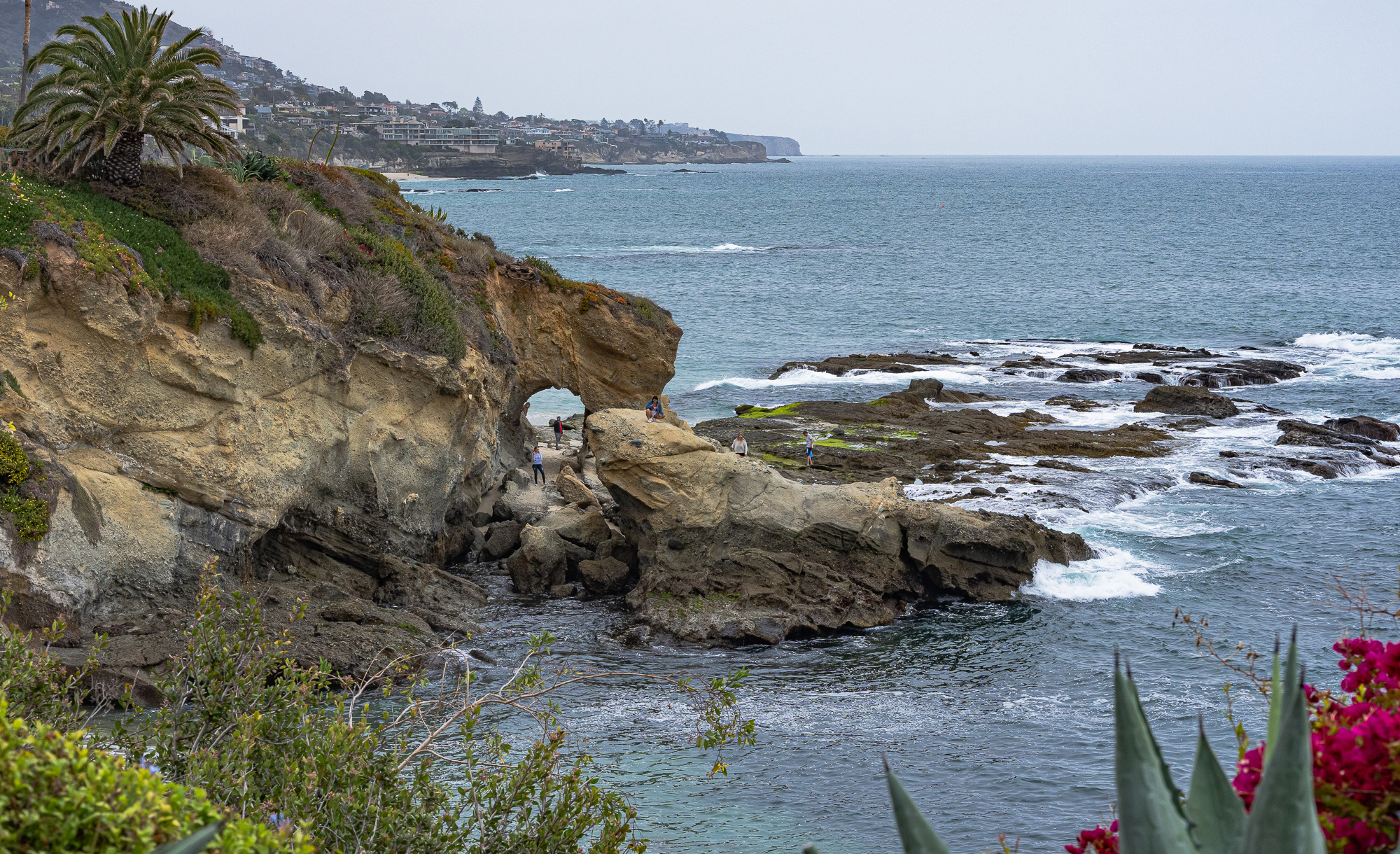
I photographed the above scene as a reference for my wife to use in a painting. It wasn’t meant to be an artistic effort on my part. However, the amount of fine clean detail makes this image compelling. It was shot with a Voigtlander 50mm APO-Lanthar lens on my Alpha 1, and slightly cropped for compositional improvement.
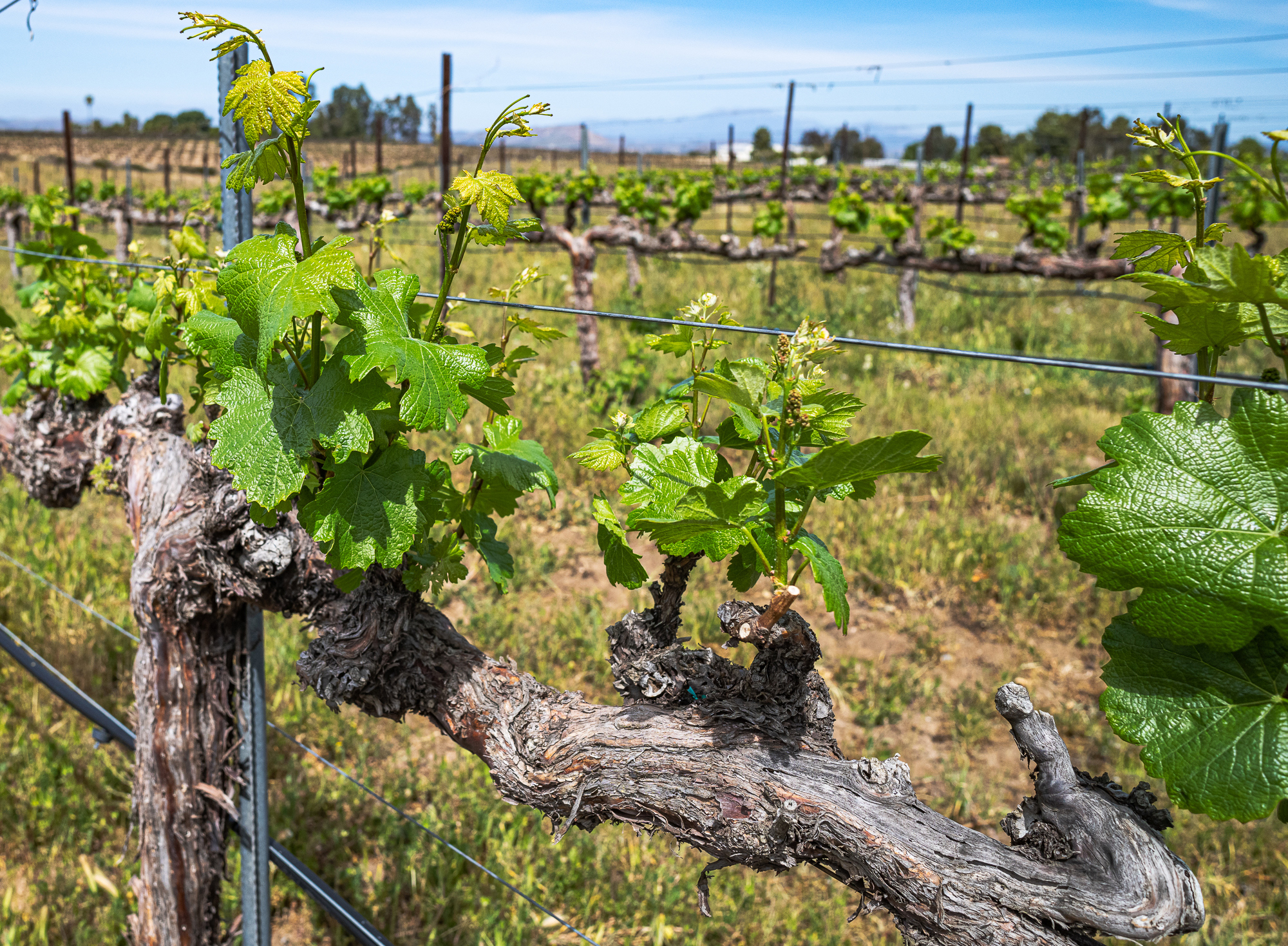
The preceding image was taken with a Zeiss Loxia 21mm f2.8 lens on my Sony Alpha 1 camera. In IQ Part III, I wrote about the exquisite rendition provided by Voigtlander APO-Lanthar lenses made by Cosina in Japan. The Zeiss Loxia lenses are equally brilliant and interesting. The five lenses in this line were developed five years ago by the Carl Zeiss company specifically for use on Sony A7r cameras. Like the Voigtlander lenses, they are beautifully designed all-metal and glass compact manual focus lenses. They illustrate the best of what Zeiss lens formulations can offer in the way of brilliant fully saturated color with exquisite micro-contrast. The five lenses in this line are also made by Cosina, but for Zeiss according to Zeiss specifications. I first used my Loxia 21mm lens in Iceland in 2016. Since then, I have added the Loxia 35mm f2.0 lens and the Loxia 85mm f2.4 lens. They make a great complement to the Sony Alpha 1.
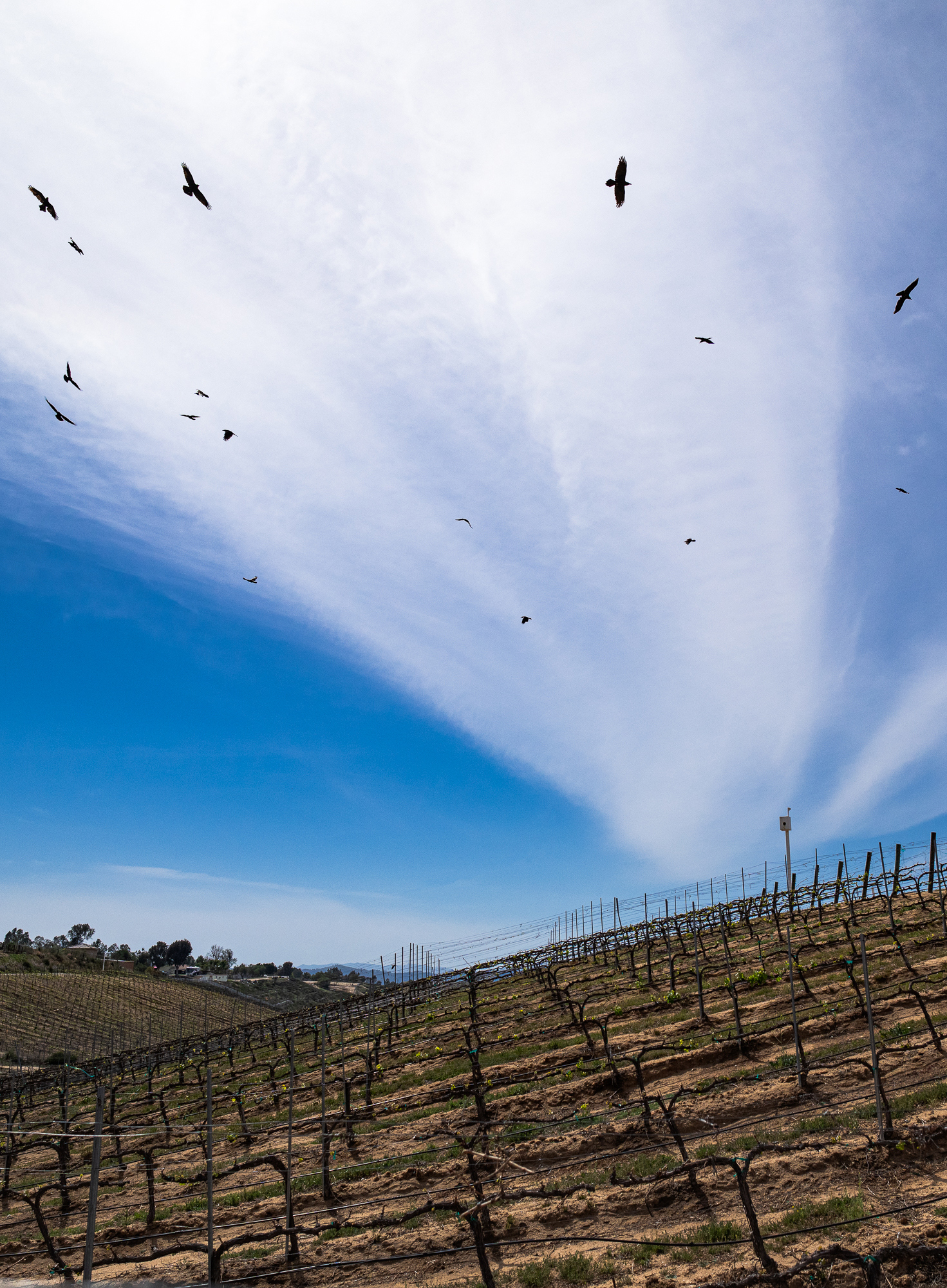
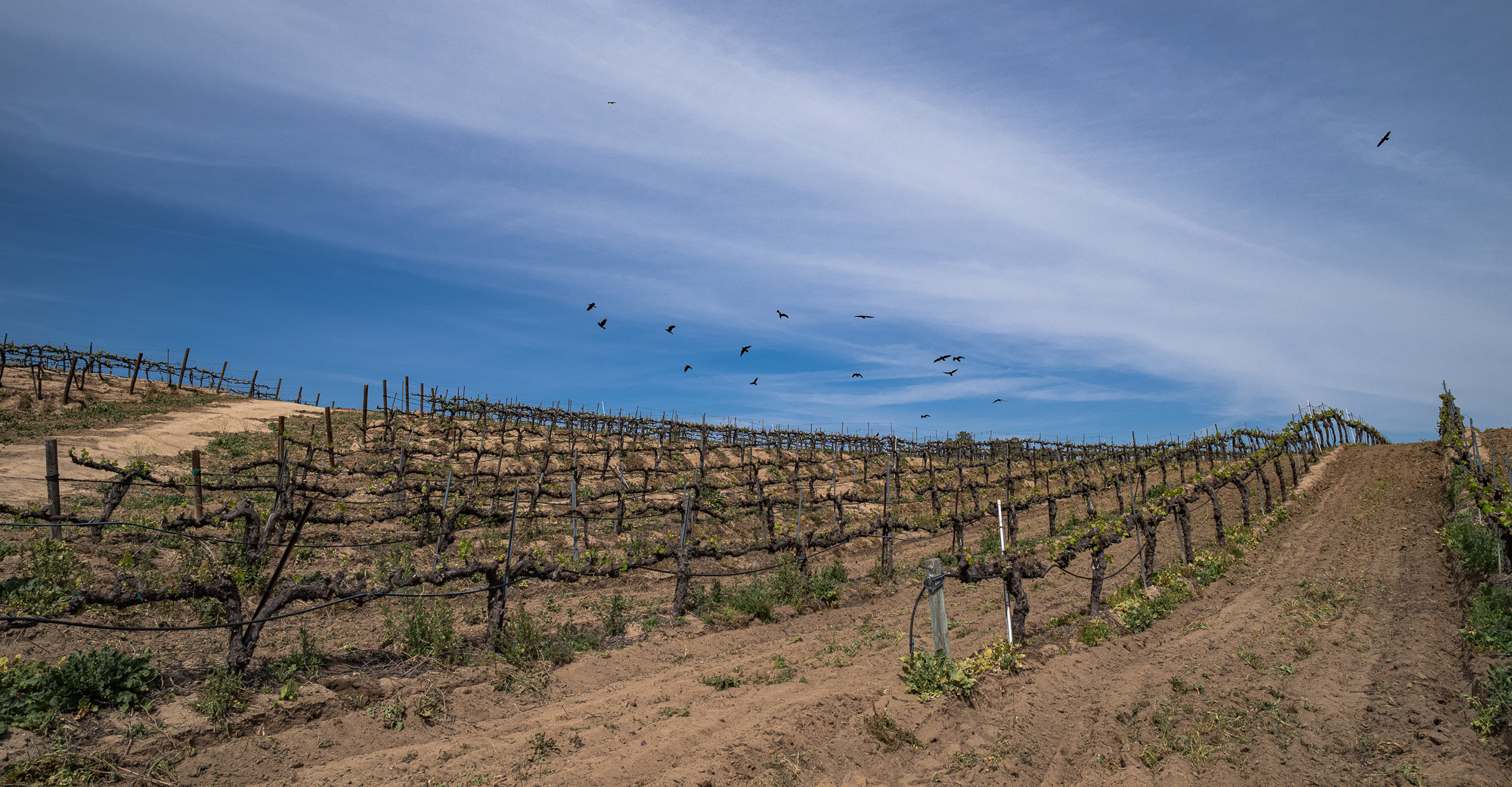
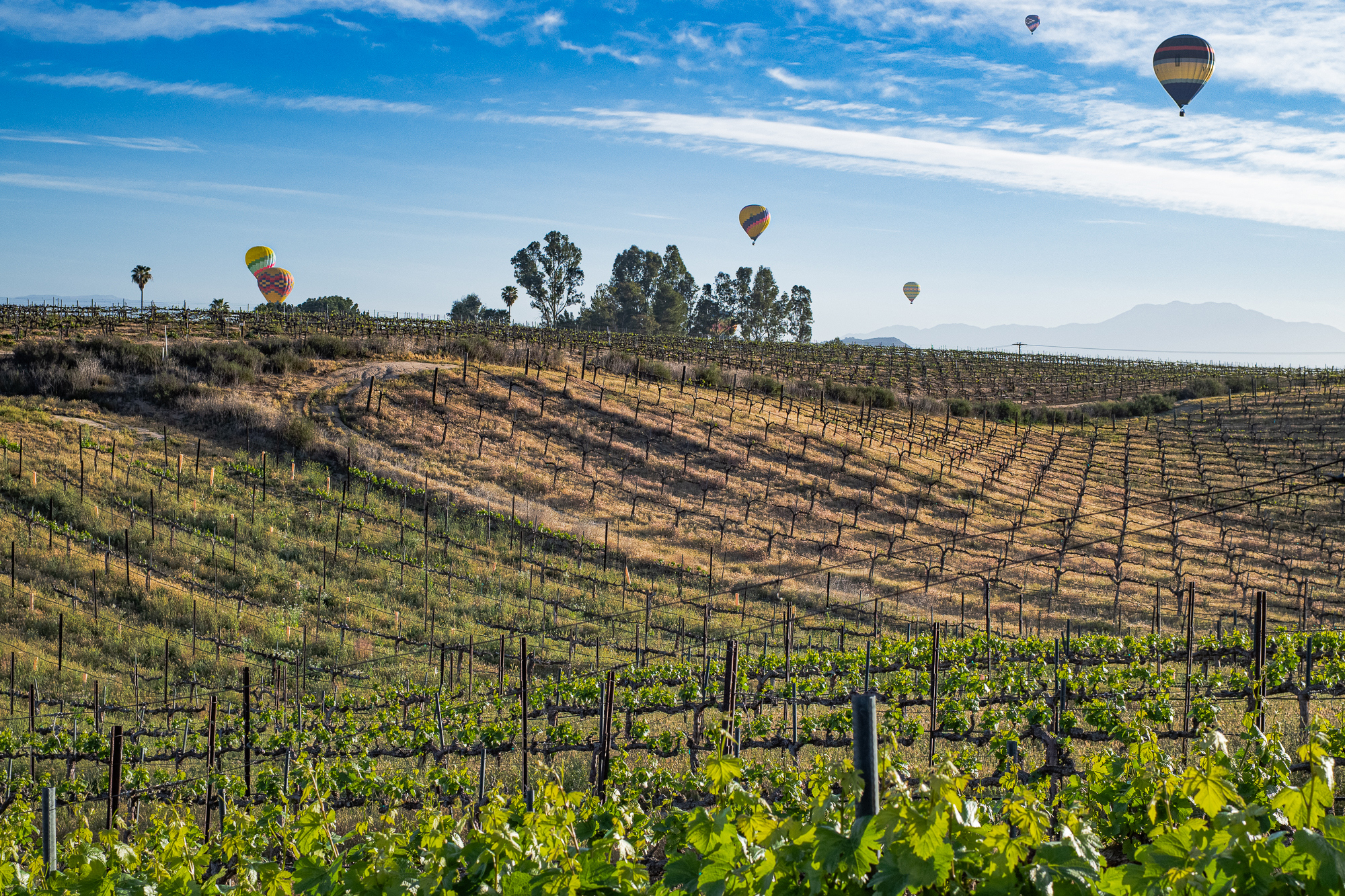
Ravens and their smaller Crow cousins love flying and often form circular formations as a means of socializing. Hot-air balloons are also frequent visitors to these vineyards. Fine background detail is evident in the above three images when looking at the vineyard stakes and guide wires.
The Sony Alpha 1 Camera is available at B&H Photo and Roberts Camera
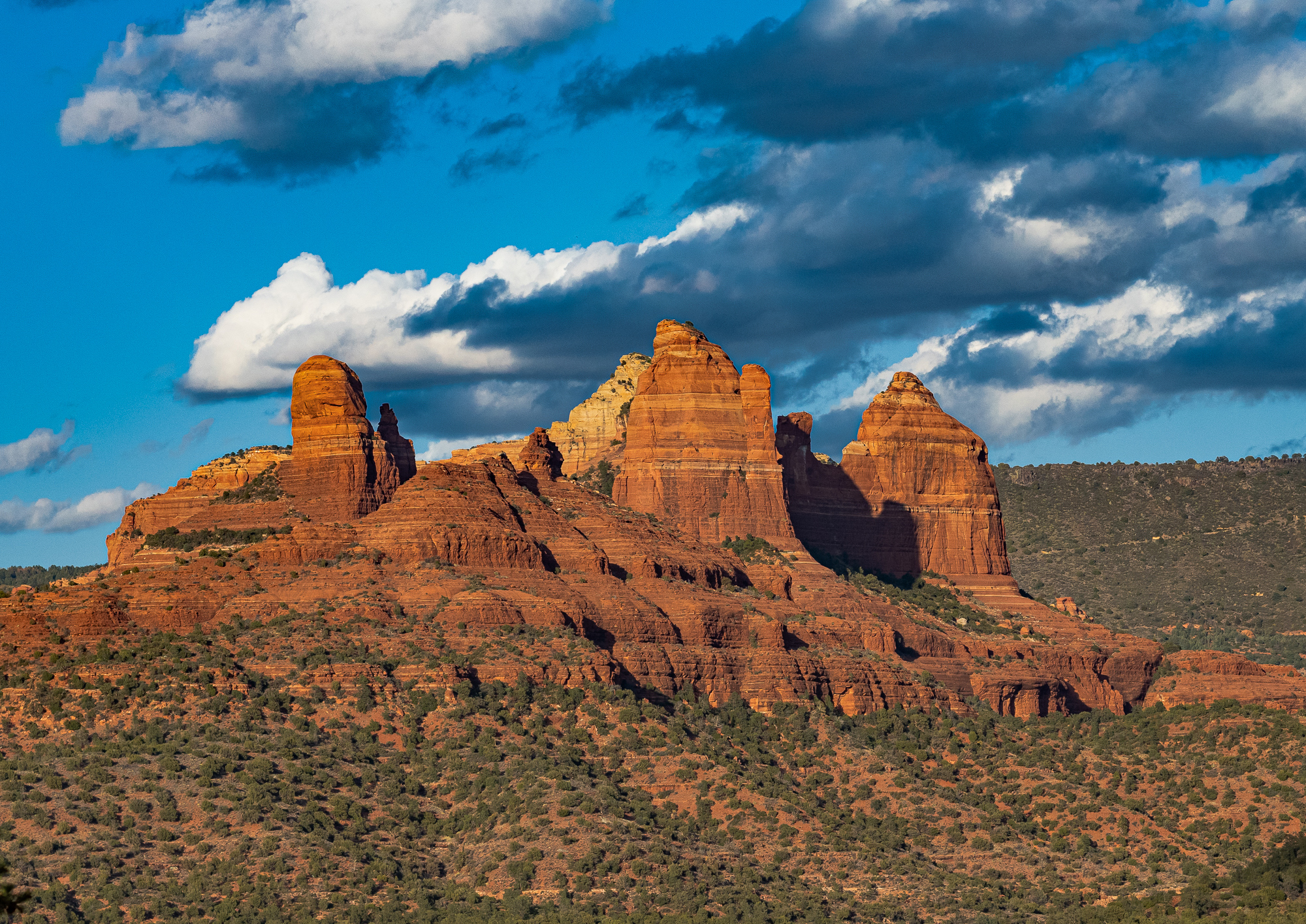
I have photographed the above formation many times, But have never achieved the detail and clarity shown in this image. The difference was the Zeiss Loxia 85mm f2.4 lens on the Sony Alpha 1 camera. Even more impressive is that this image was shot in Crop-Sensor mode which eliminates 56% of the pixels surrounding the central image. This was further reduced from 22 MP to 13MP by heavy cropping, a total reduction of almost 75%. Yet the screen enlargement does not show any decrease in detail or definition which is optimal out to 1:1 enlargement. This is also my first shot of this formation that distinctly shows the light yellow color of the rock projection in the background. This shows the high ability of this camera lens combination to pick up subtle color differences with high accuracy. This capability is further illustrated by the next five images in the next section.
Color Accuracy & Clarity
The best Zeiss lenses are known for their precise and fully saturated color capture which is amply demonstrated by the five Loxia lenses. The color accuracy of the Sony Alpha 1 is equally outstanding. Together, this combination produces striking but also accurate color rendition.
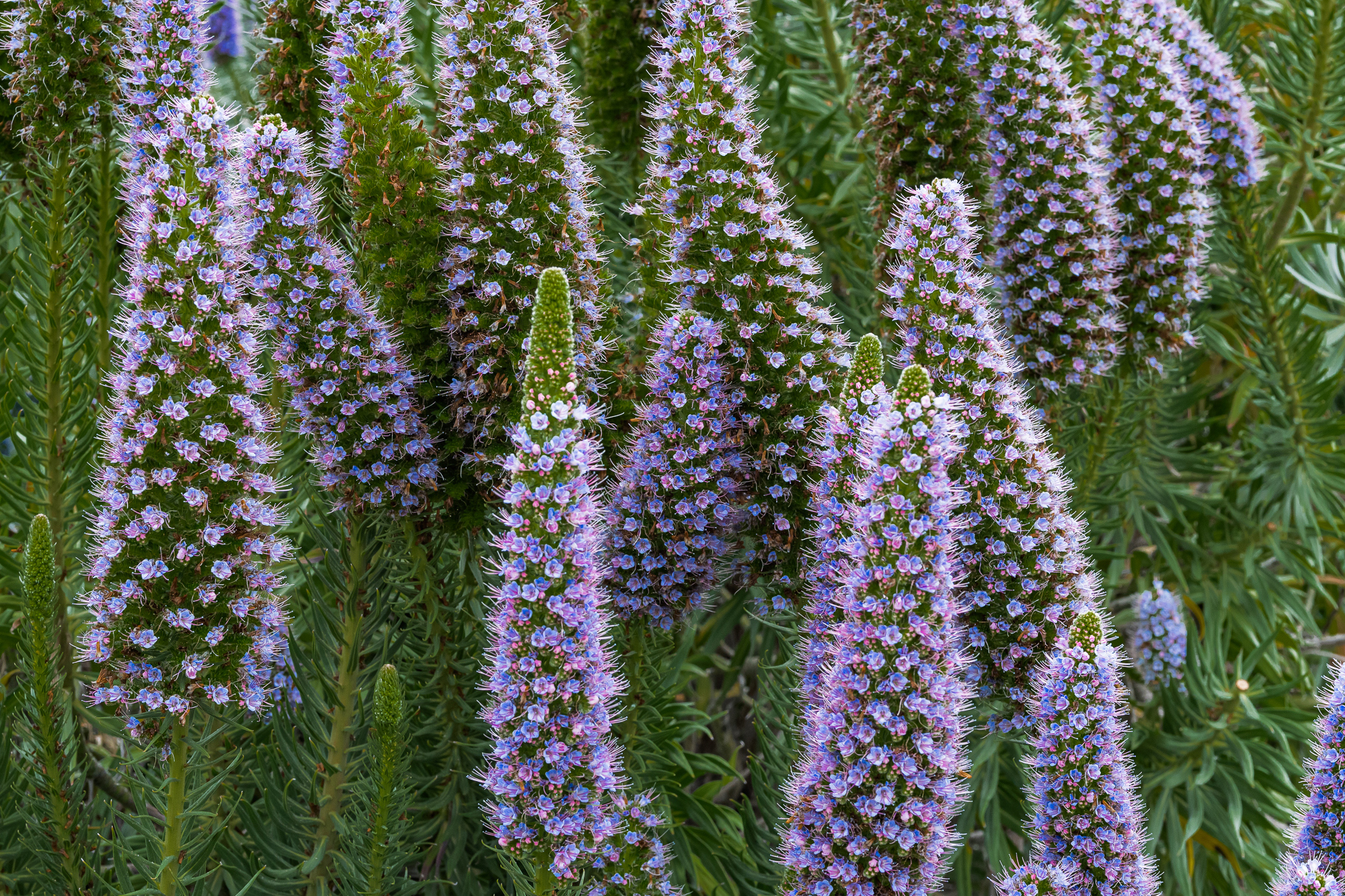
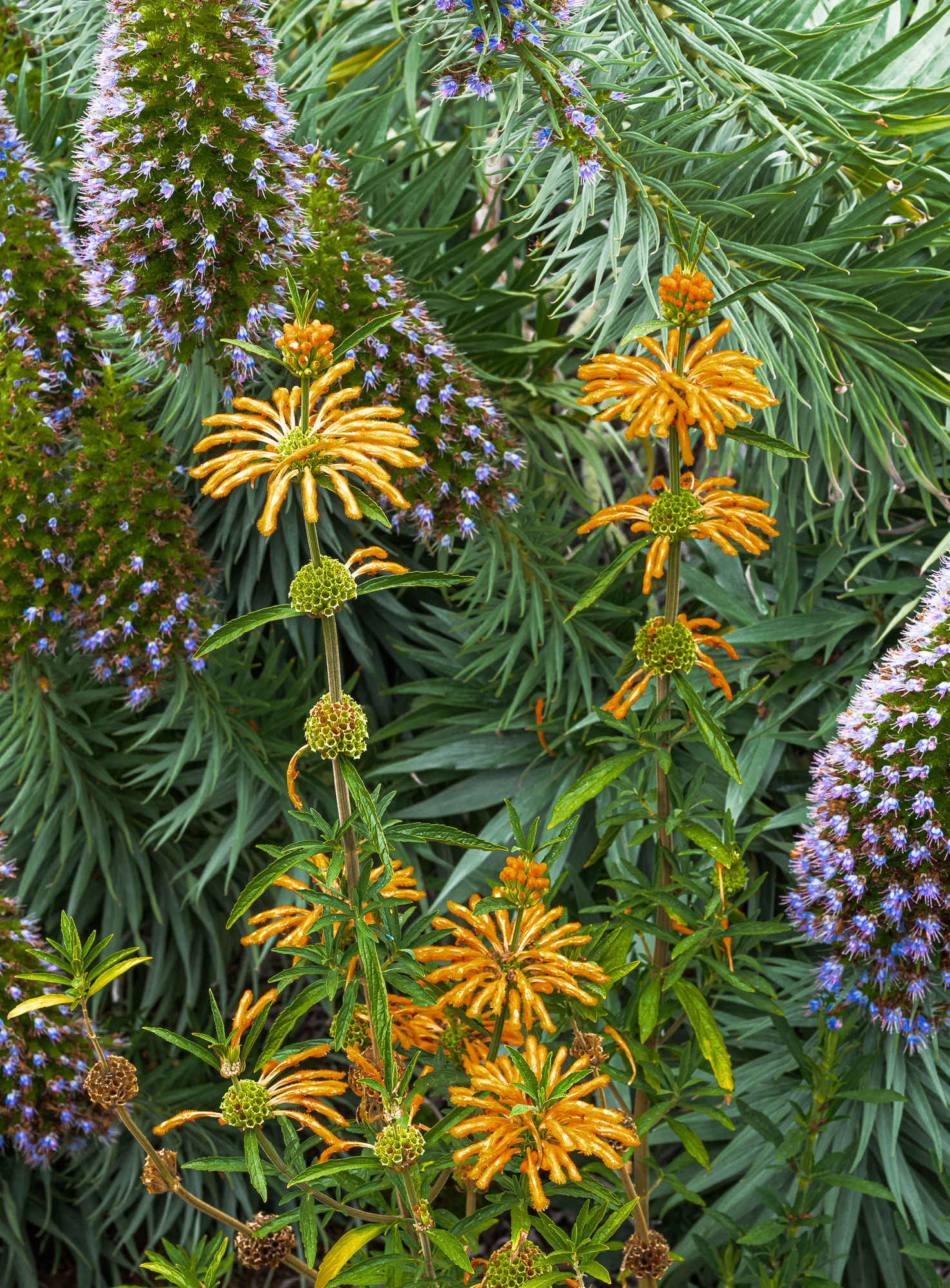
Palo Verde trees in bloom produce an array of vivid yellows. The next two images contrast these yellows against a vibrant blue desert sky. The first of these two shows yellow light reflected off the blooms with a sky background, whereas the second image shows a lighter yellow color resulting from predominantly blue skylight transmitting through the petals. Again, the Alpha 1 camera with a Zeiss Loxia 35mm f2.0 lens picks up these subtleties with ease.
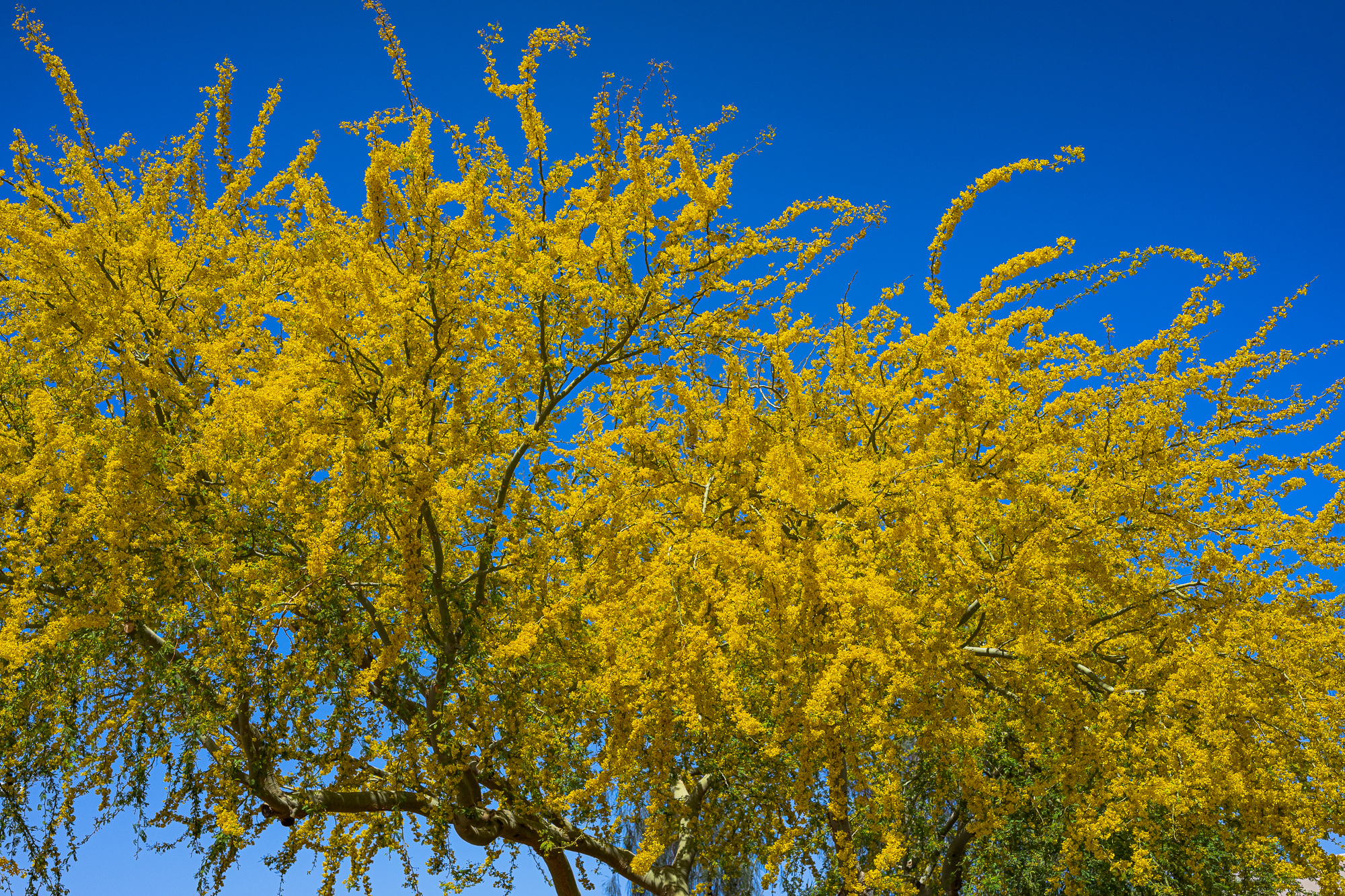
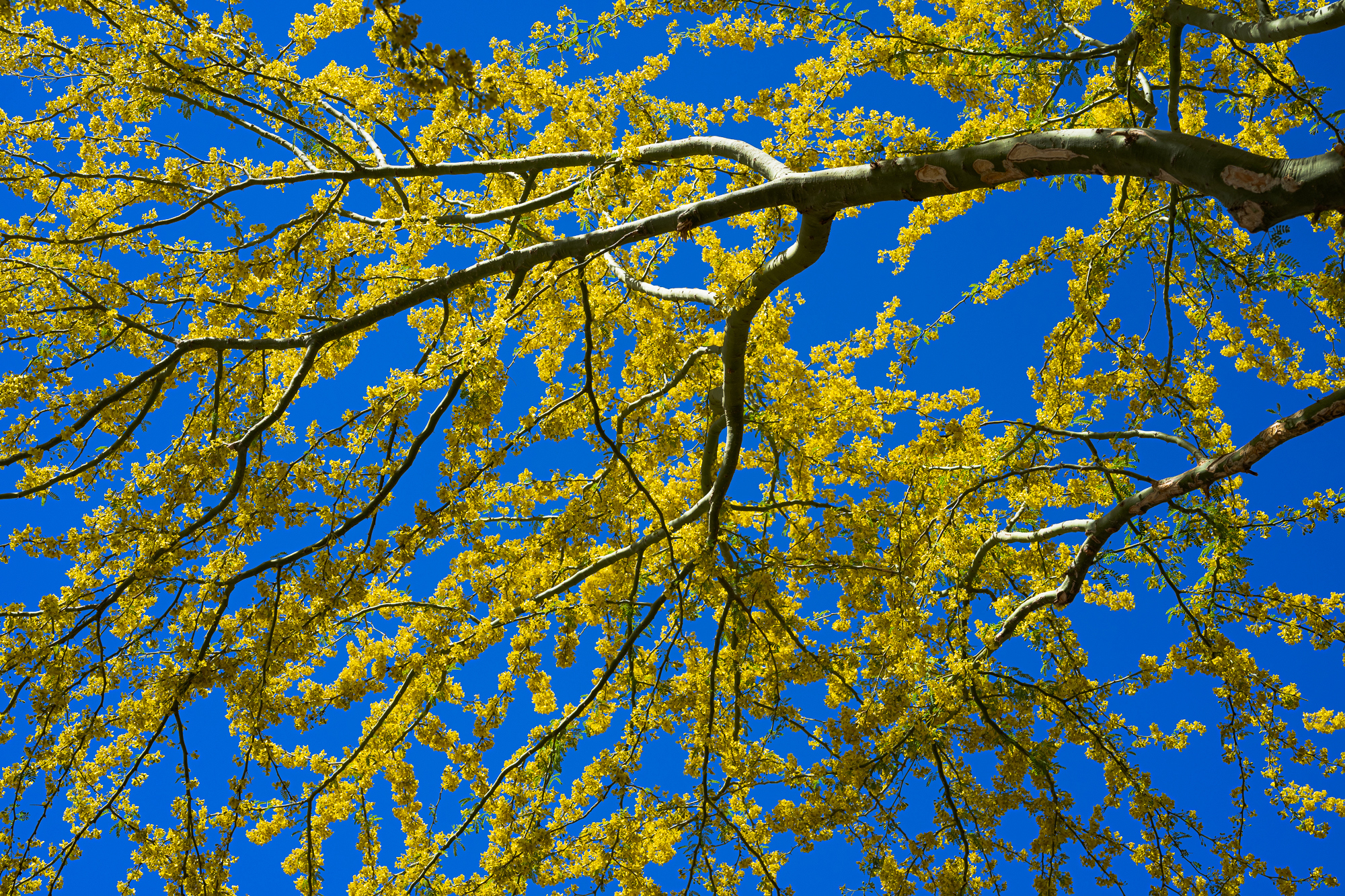
The last image in this category captures the delicate colors of a feral “Peach-faced Love Bird” eating blossoms from a tall desert succulent. These birds are descendants of pet South African Parrots released into the Sonoran Desert surrounding Phoenix many years ago. They survived through superb adaptation skills enabling them to cope with a hotter drier environment (than South Africa), and are now found on cacti and other desert plants throughout greater Phoenix.
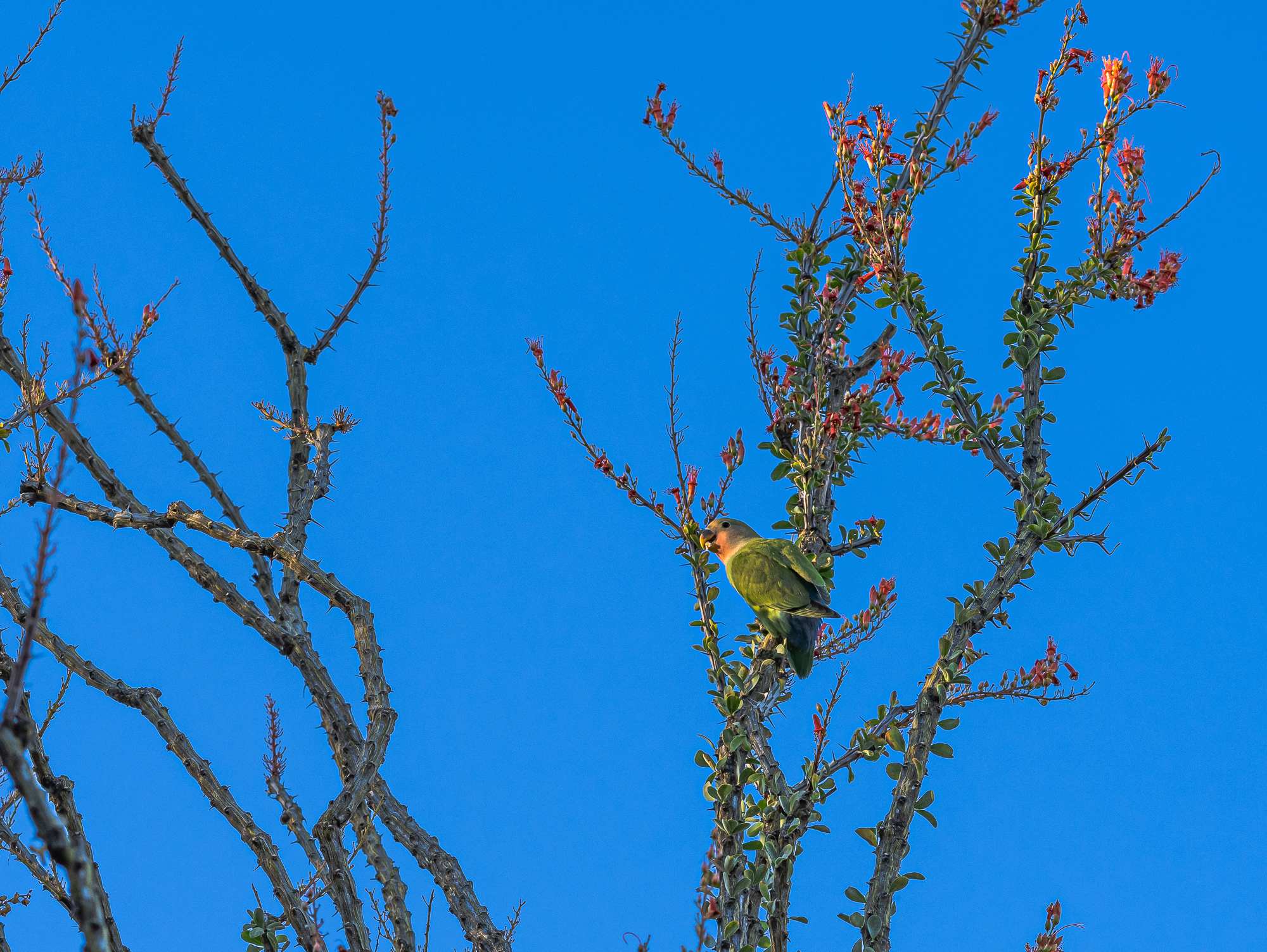
Dynamic Range
The Dynamic Range of a Sony Alpha 1 is roughly 15 ½ stops, or slightly greater than the previous A7 and A9 models. But, that doesn’t tell the whole story as improved data capture in the darker tones (shadow detail, etc.) is substantial because of reduced noise. This camera is also able to fully record micro-contrast picked up by the Zeiss and Voigtlander APO lenses. In my view, this presents a richer rendition of the original scene, even under low light and contrasty light conditions. The next five images capture Sedona’s red rock formations and dynamic sky illuminated by widely varying light intensity and quality.
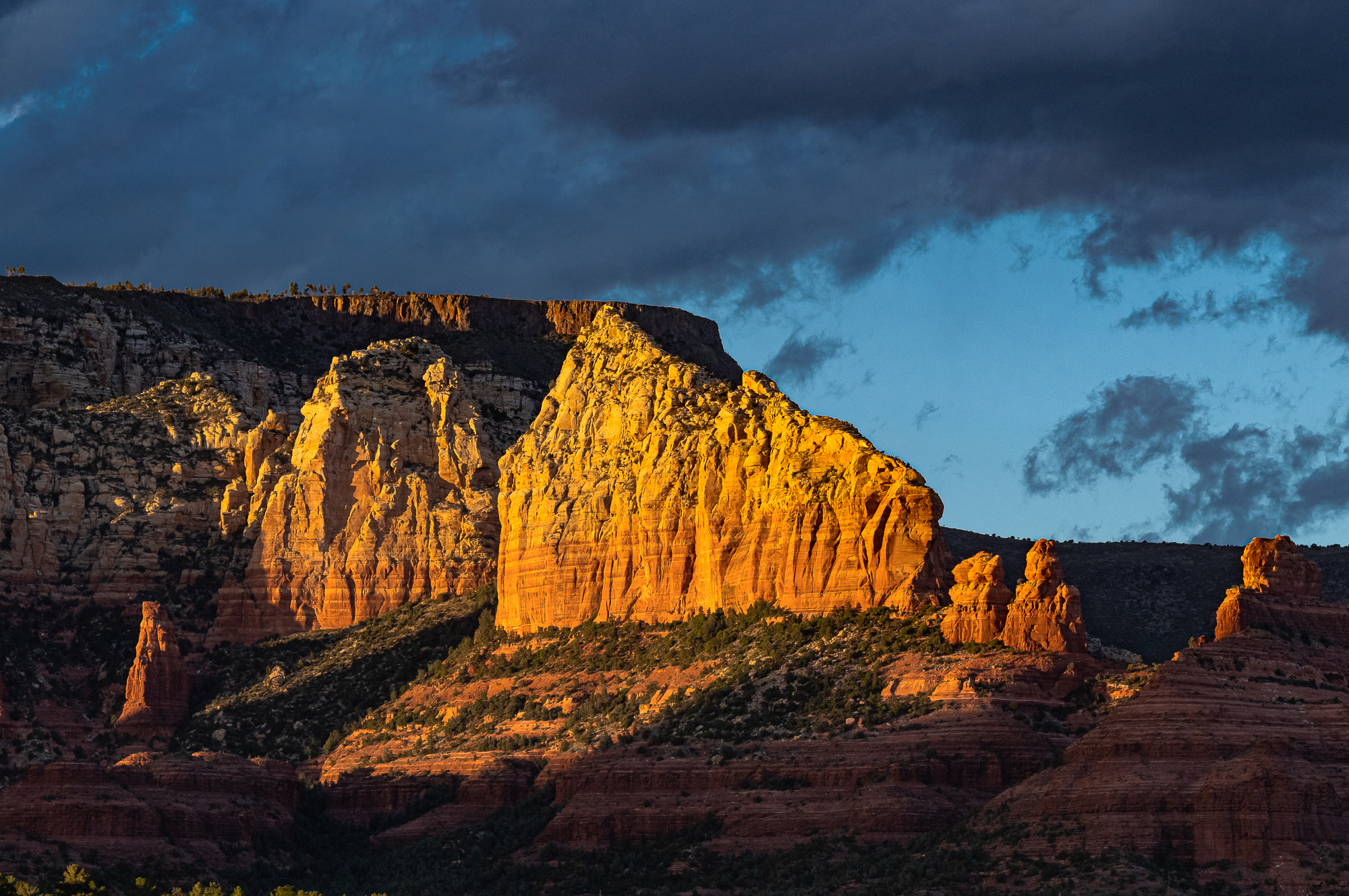
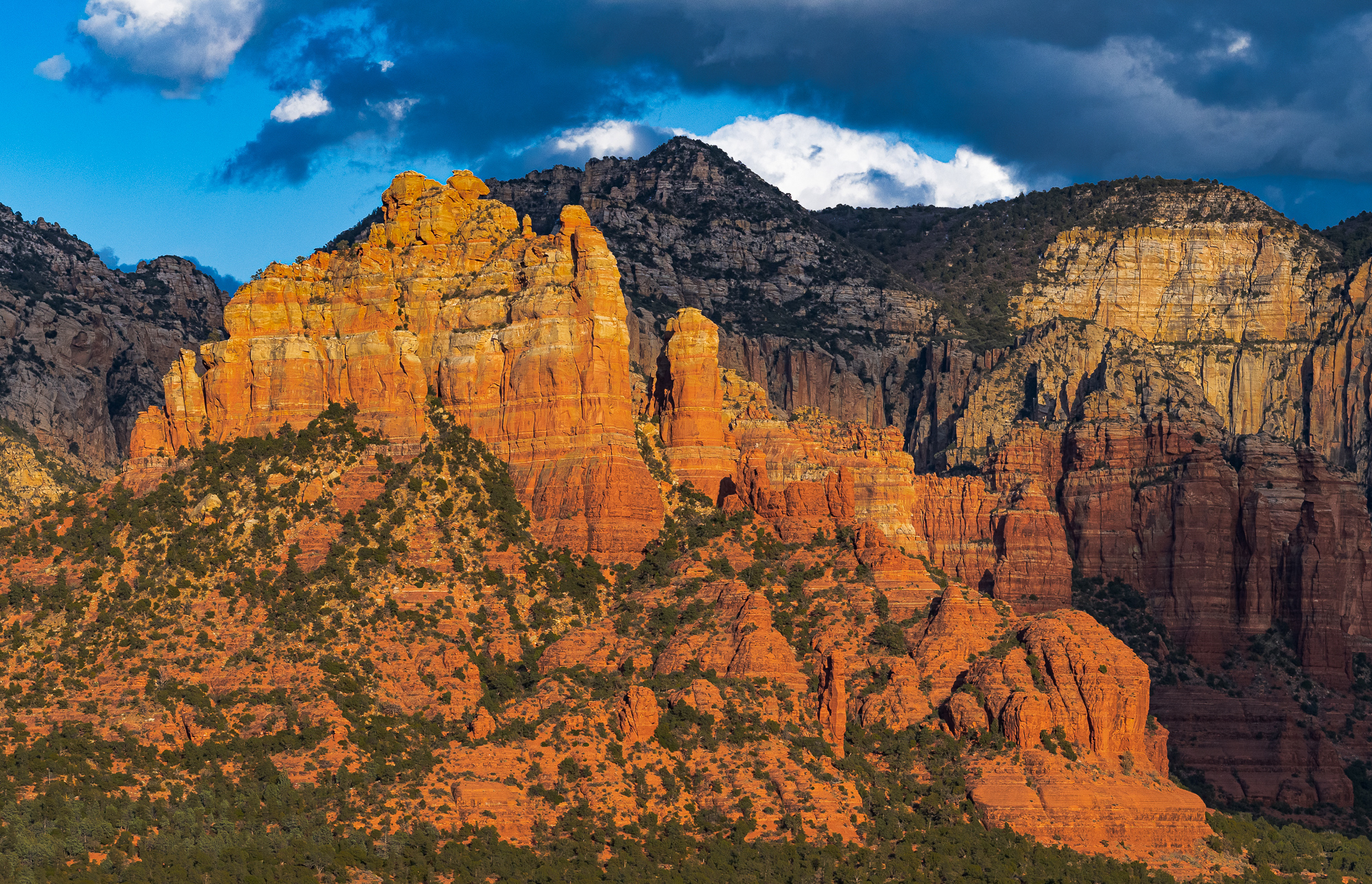
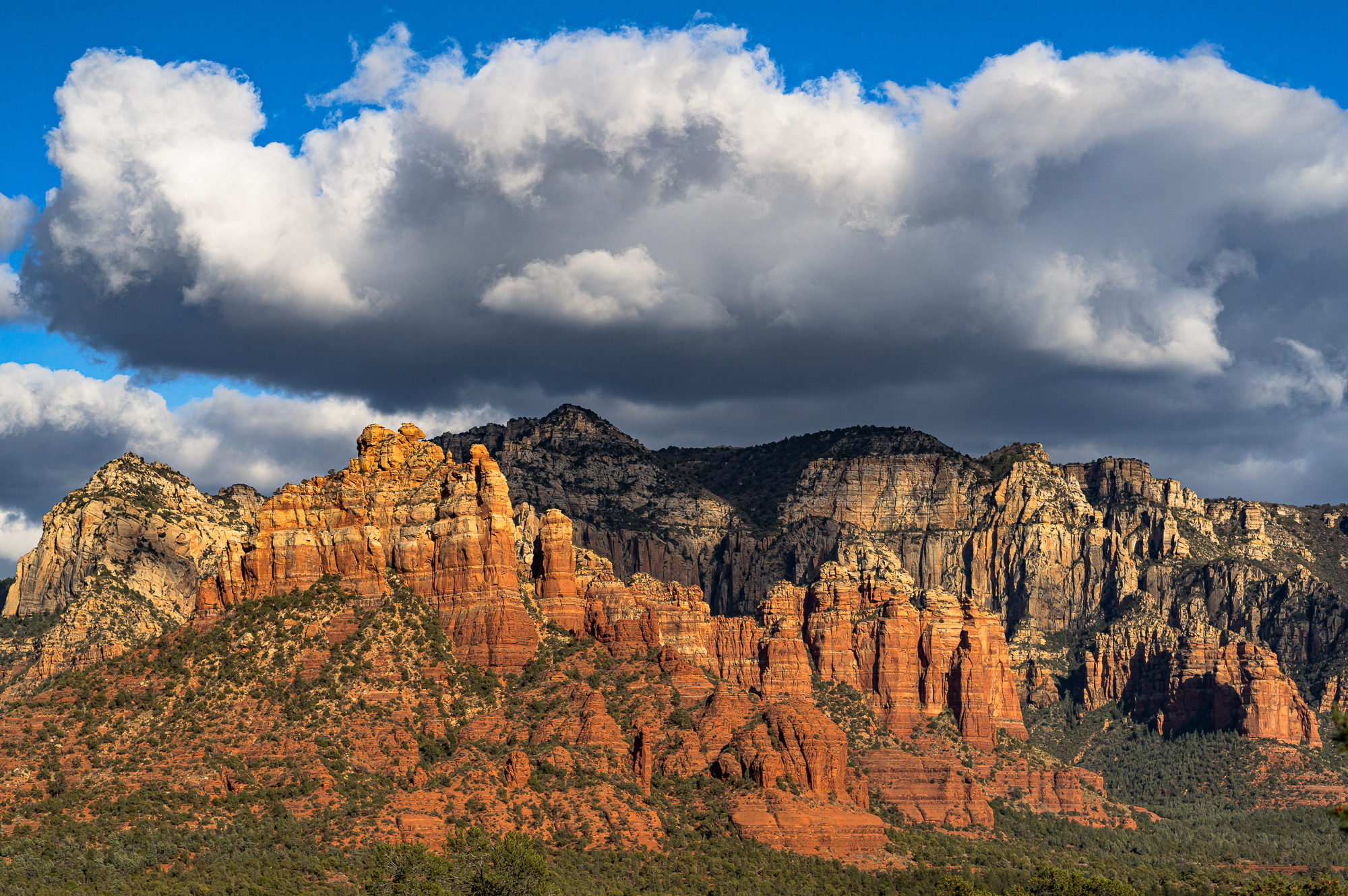
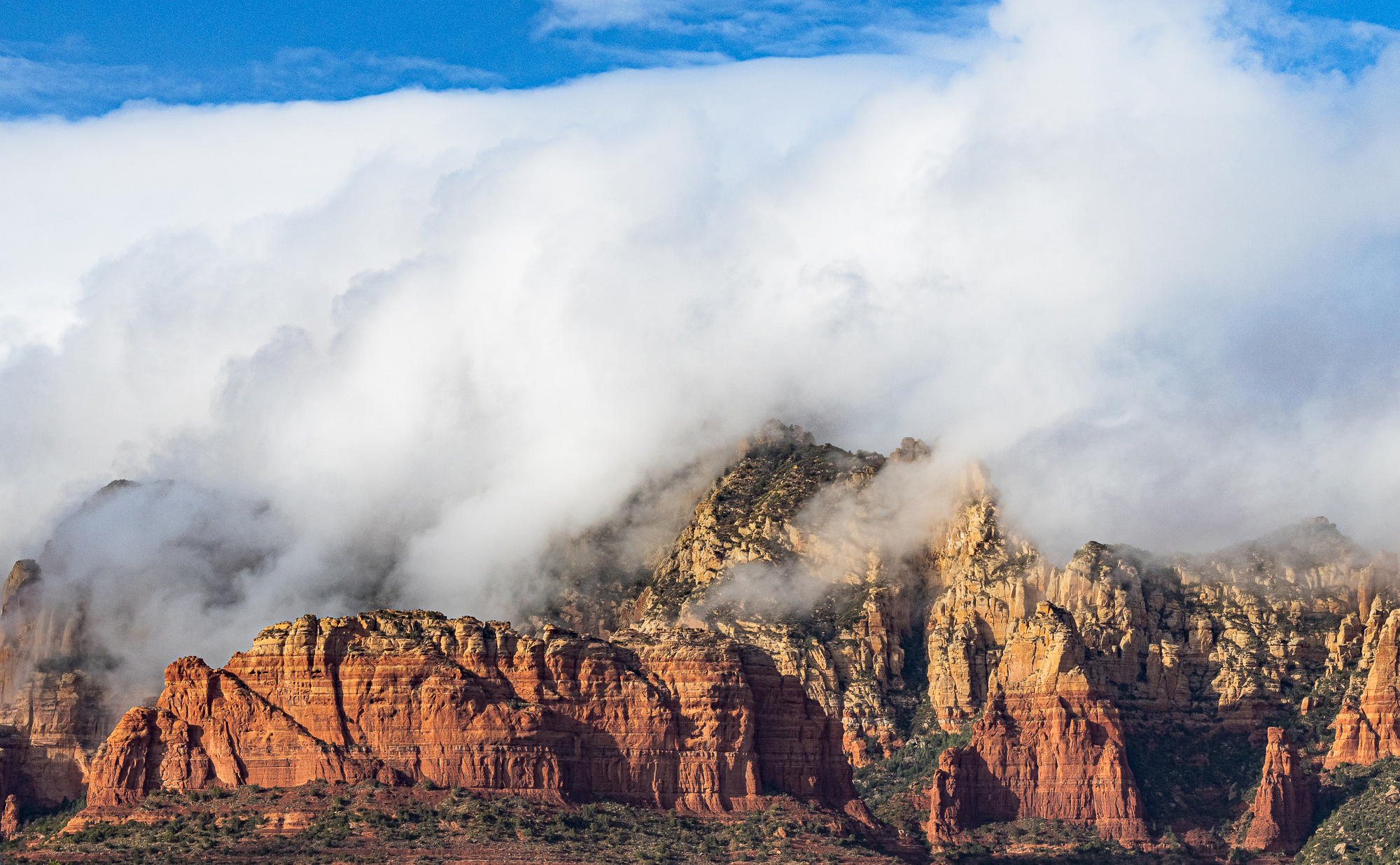
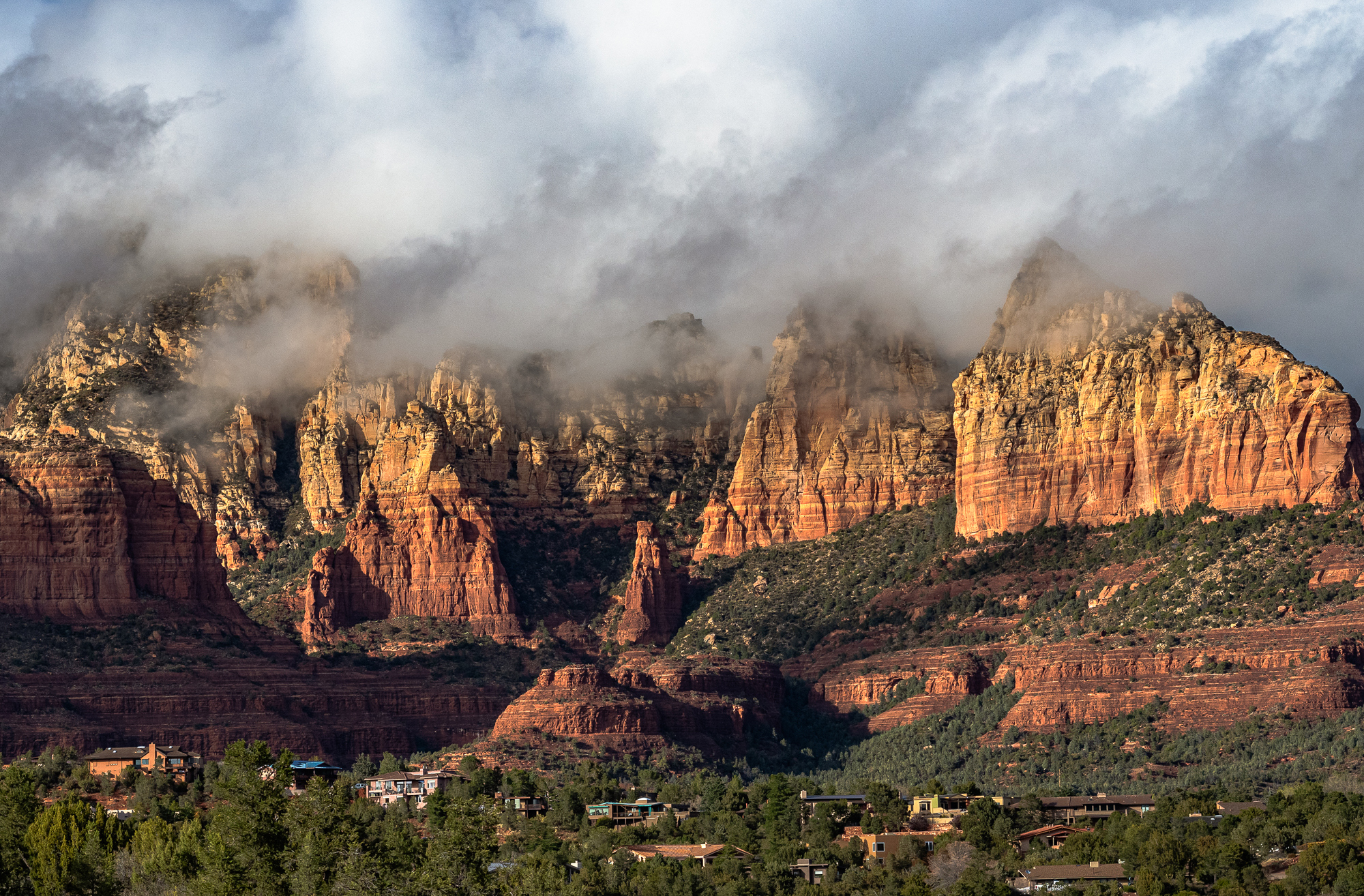
In contrast, the last image in this section features hazy early morning light coming from the side and slightly into the camera’s view. This is a difficult image to record properly. But, with the Alpha 1 and a Zeiss Loxia 35mm f2.0 lens: No Problem!
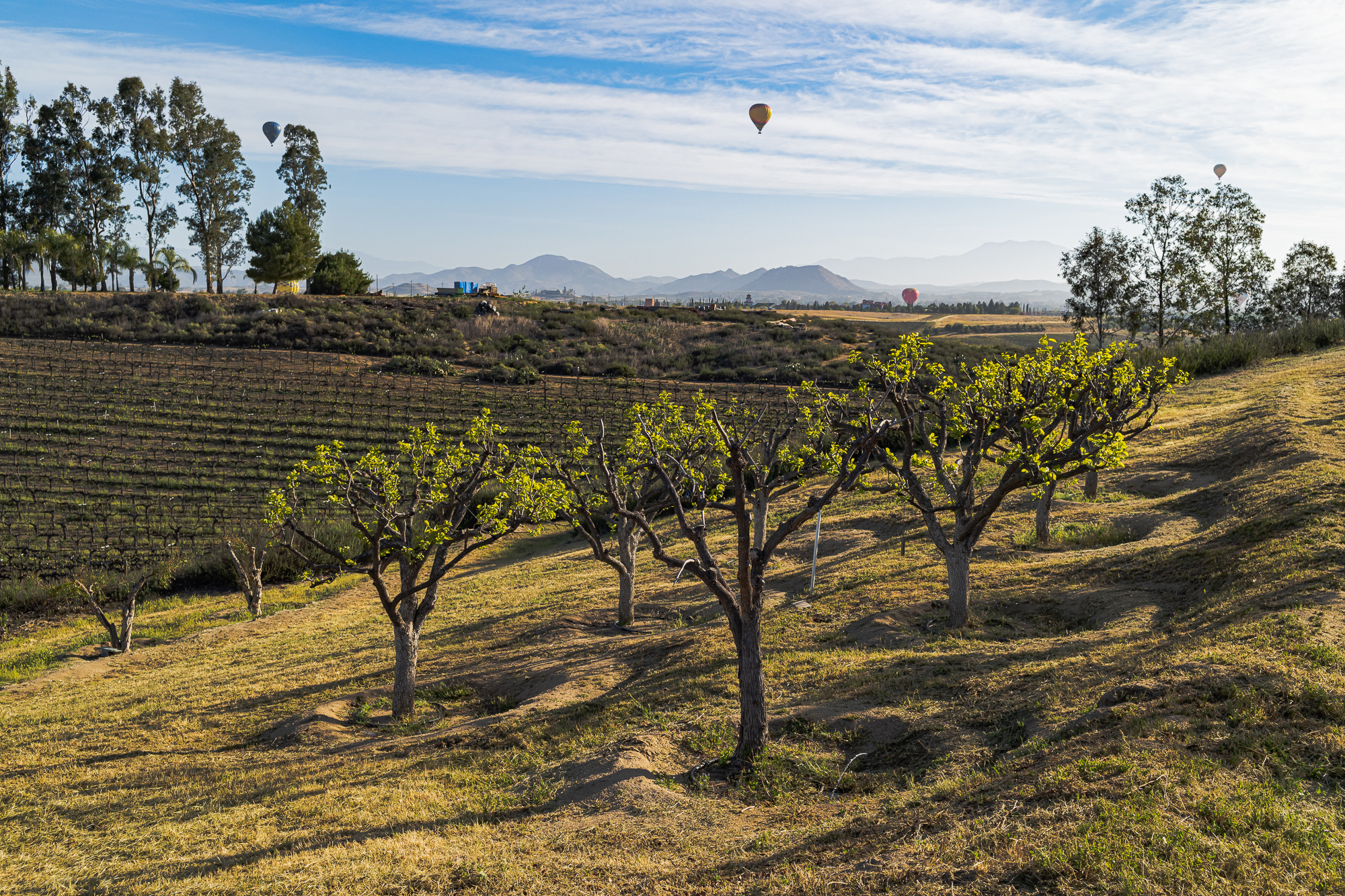
Low Light Imaging
One of the most difficult subjects to render accurately is shooting into a bright sunset while still retaining enough shadow detail in the foreground to make the image balanced and informative. I’m convinced that the next image could not have been captured as well by any other 35mm format camera.
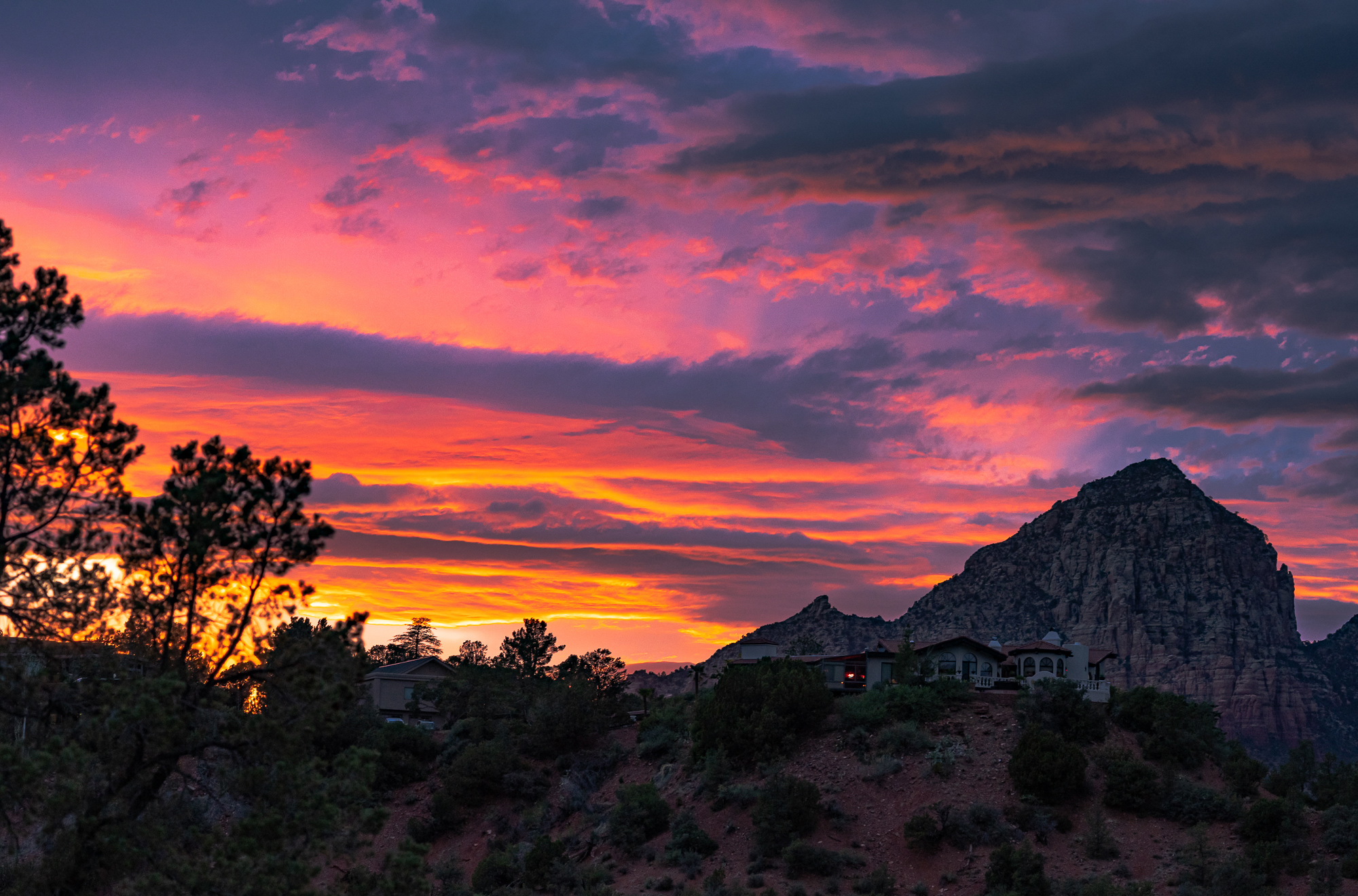
The next two images give a pretty good idea of how well the Sony Alpha 1 can capture good images under what seems like minimally lit scenes. The first one is a stitched panorama that caught the faint indirect afterglow of a still luminous sky. The sun had already set.
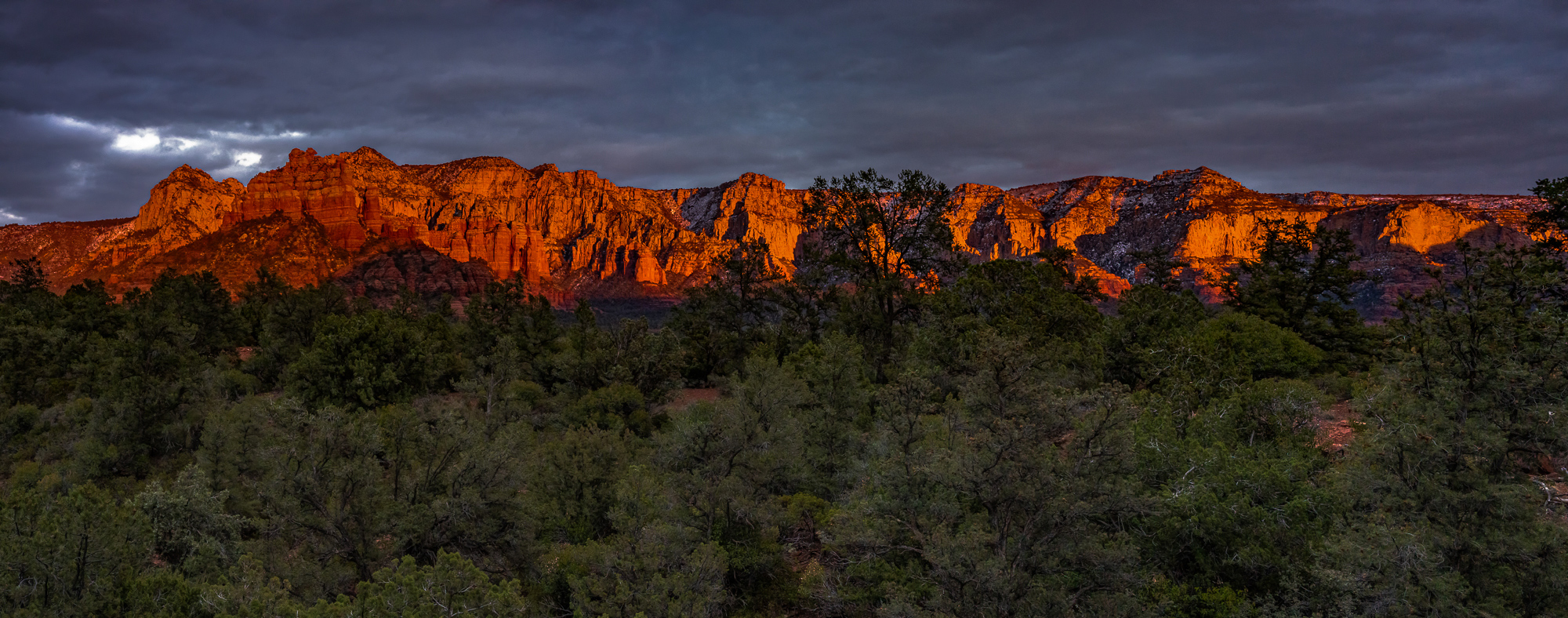
When I stumbled across the next scene I only saw subdued background lights and reflections, and barely saw the white swan sitting on a ramp. Yet, at 32000 ISO, the Sony A1 made a credible image of the scene and caught the ambiance. And, yes there is noise; but, it is well controlled. The Sony A7s III could do no better.
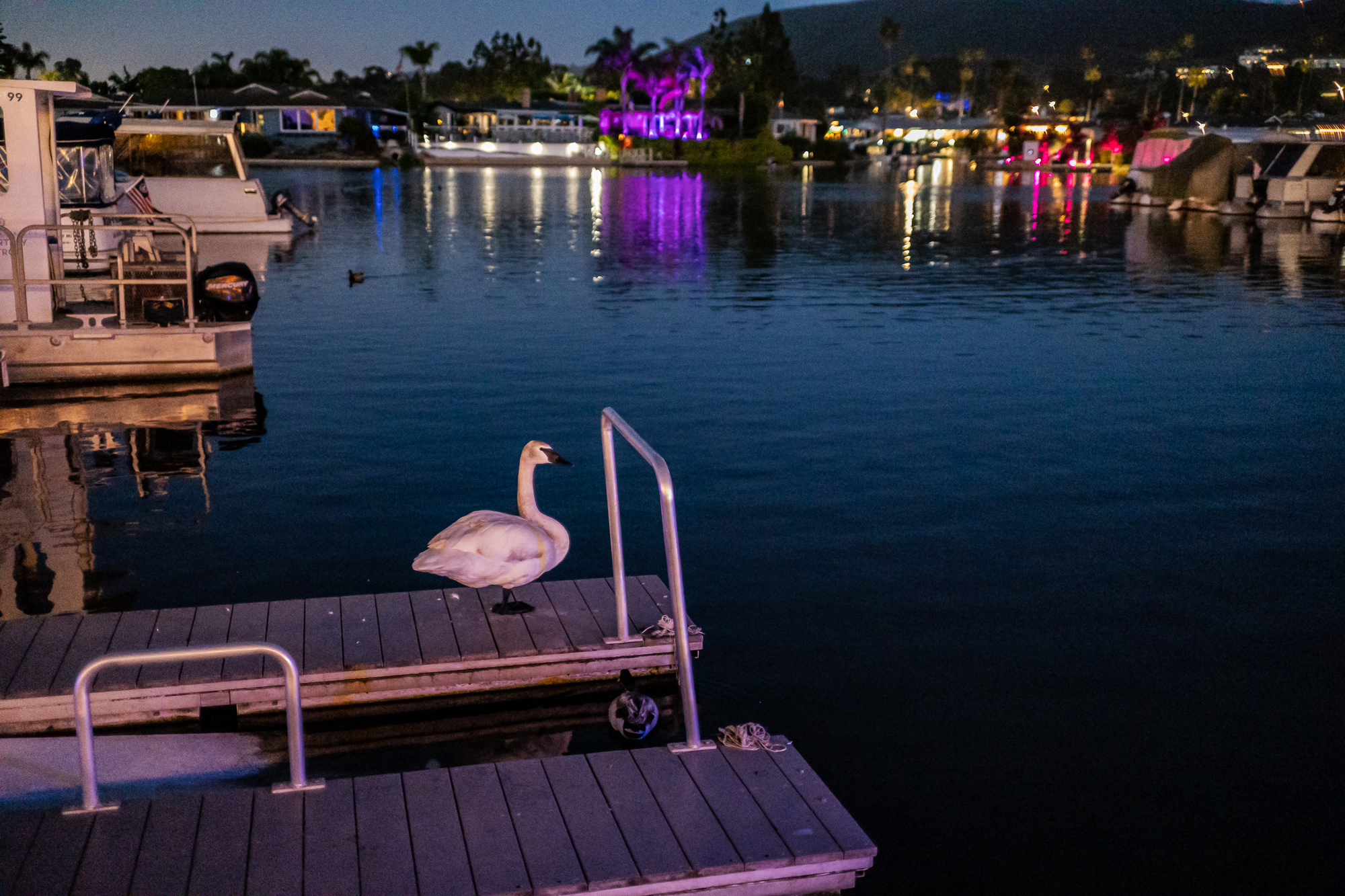
The final image in this section was taken with zero Earthly light. It is a Sedona night sky during the new moon and before moonrise. I could not see one foot in front of me, even after my eyes grew accustomed to the dark. This was a fifteen-second exposure at ISO 2500. To get detail on the Juniper tree, I couldn’t illuminate it directly without washing it out, even for a fraction of a second. Instead, I had to bounce the duller outside of the flashlight beam off the dirt for half a second to allow a limited amount of soft light to reflect onto the tree. The dim reflected light did pick up an orange hue from the Sedona soil. Well, sometimes you improvise with what’s available. Anyway, it worked reasonably well.
In case you’re wondering, the orange glow on the right horizon is Phoenix’s light pollution over 100 miles away! The two bright “stars” on the left are the planets Jupiter and Saturn. And the streak in the upper right is a meteor courtesy of the Eta shower leftover from Hailey’s Comet, the last time through.

High-Speed Imaging
This is not a traditional IQ factor in that it is independent of optics and sensor quality. However, it is reasonable to conclude that any camera capability that significantly helps photographers improve the end result, and to increase the percentage of quality captures, qualifies as an IQ factor. When photographing subjects that move quickly and often unpredictably, fast shutter speeds and quick reflexes are often not sufficient to produce sharp clear images, particularly with long lenses with shallow depth of field and field-width angles.
In recent years Sony has expended considerable effort to develop what is now recognized as the best tracking systems in the camera industry. Their A9 cameras utilized 693 phase-detection autofocus points which locked on to fast-moving objects anywhere in the frame with a high rate of success. Human eye recognition capability improved sports photography success rates as well. The recent Sony A7s III model added animal eye recognition. Now, the Sony Alpha 1 has 759 phase-detection and 425 contrast-detection autofocus points covering 92% of the image area and added bird eye recognition to make the Alpha 1 an incredible tool to capture the fast animal and bird movement.
With the Alpha 1, Sony also improved capture capability in one more significant way. Long before digital photography, the great 20th-century documentary photographer Henri Cartier Bresson coined the term “the decisive moment” referring to peak action, posture, and expression. The visual impact of these brief moments in time usually sets one particular exposure apart from all the others. I trained myself to anticipate those moments and capture them on film, and later digitally. But, in today’s fast-paced world it is really difficult to do that most of the time. High continuous frame rates improved the odds, and most pro cameras could expose 10 frames per second. Sony upped the ante to 20 fps with the A9 camera. Their Alpha 1 has gone even further. It can shoot full-resolution JPEG and lossless compressed RAW files at 30 fps achieving almost 100 percent success for decisive moment capture.
I have not yet had the opportunity to test this in any dramatic way. However, I used an intermediate 15 fps speed to capture the alertness of Mule Deer that constantly scans their surroundings with their huge ears. The scene involved three deer, a yearling that left its mother, and another young doe, partially hidden by foliage, to cross an open area. The two older doe’s hung back while scanning the area ahead. Within the 15 frames, I took there was one that showed both sets of ears fully alert and scanning uphill and forward. They knew that I was fifty feet away and turned around. The yearling saw this and sprinted back toward them before I could capture it.
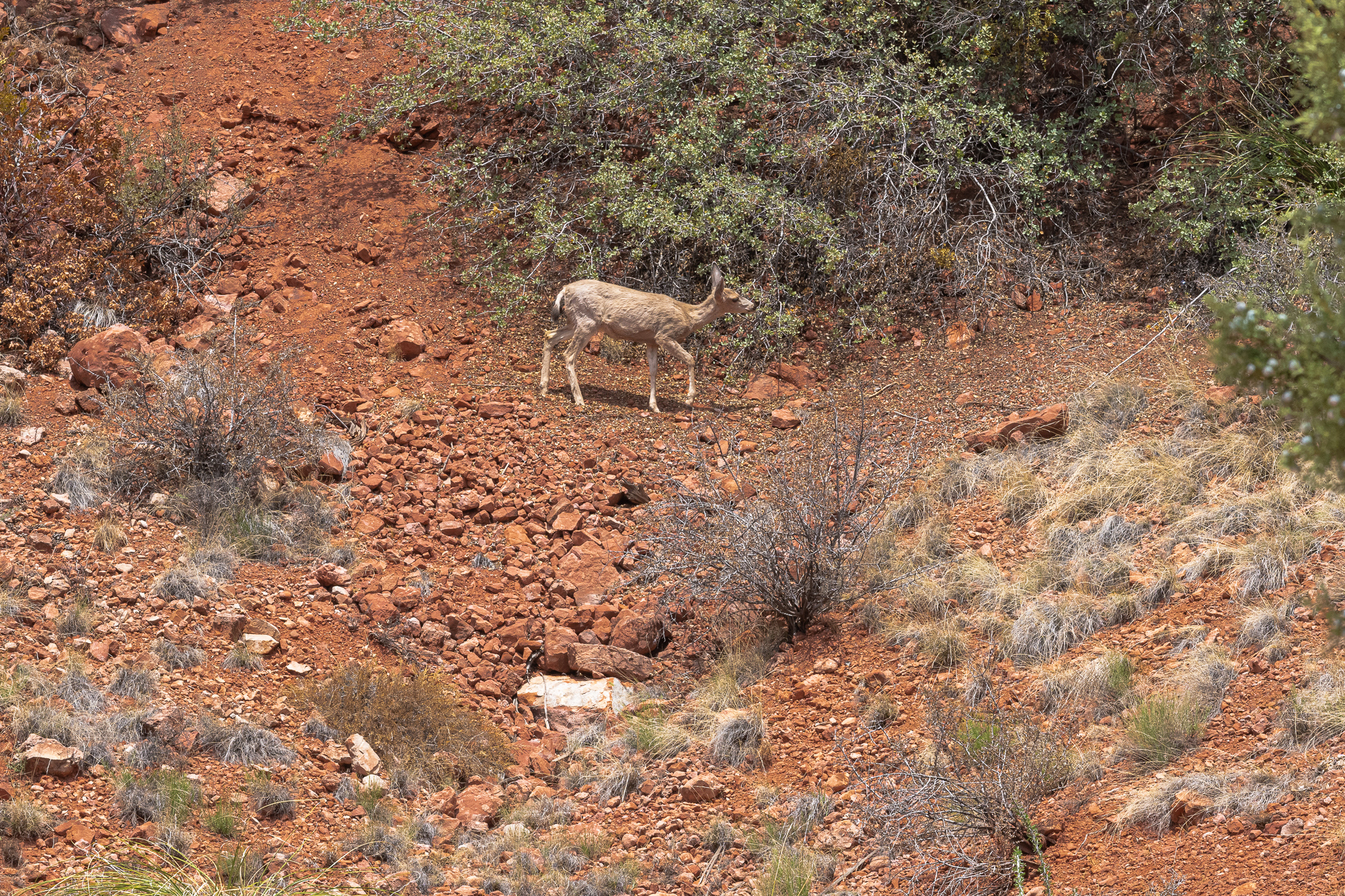
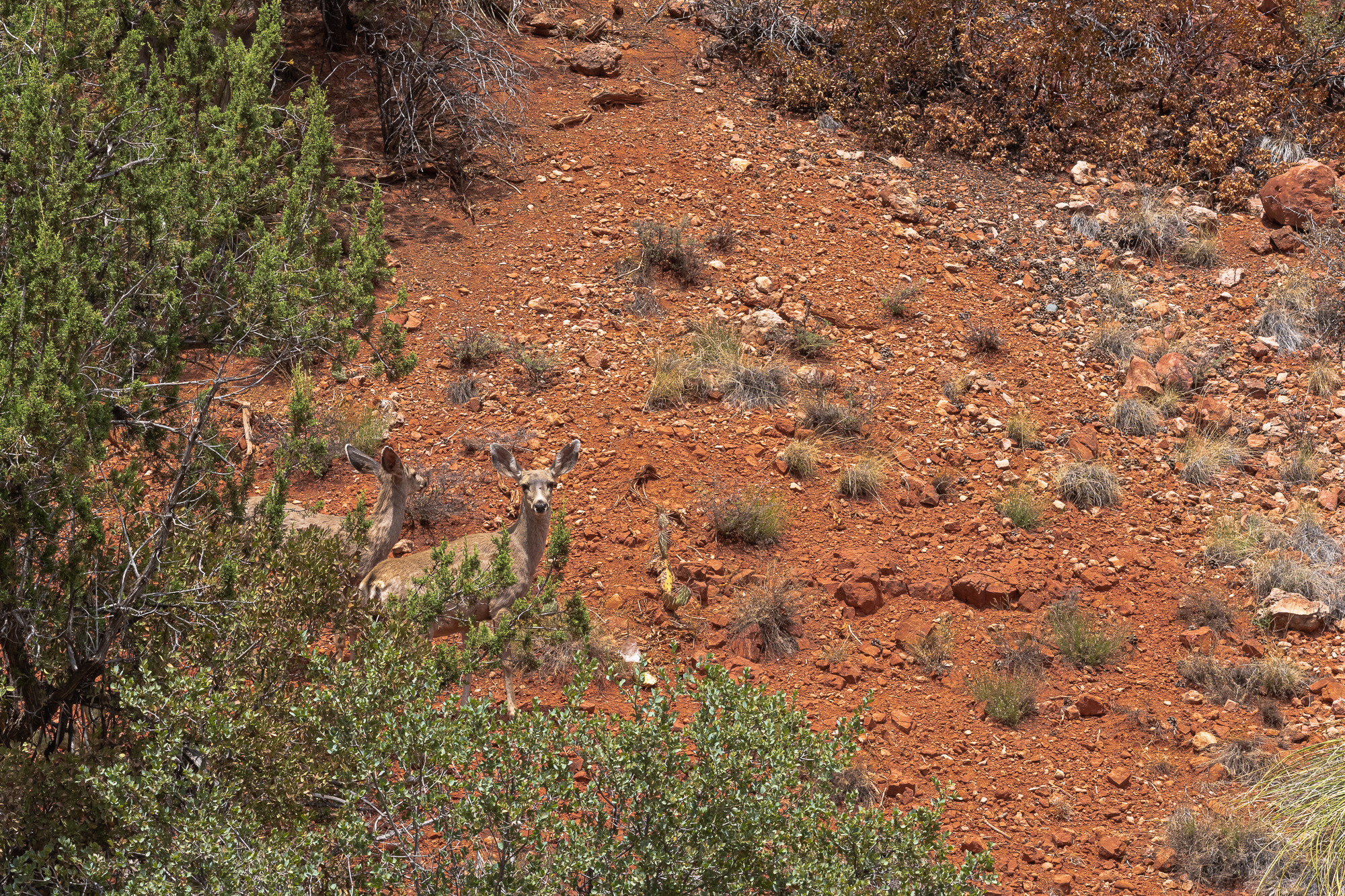
The two preceding images were captured with a Zeiss Loxia 85mm f2.4 lens on the Alpha 1 in Crop Sensor mode, giving an effective focal length of 128mm, but with a 22 MP image. Both images were focused manually. Other than using a moderately high frame rate of 15 fps, this was not a real test of this camera’s capabilities. That will come in September when I expect to photograph Moose and Elk in full rut, and a few Grizzlies in Montana and Wyoming.
Stay tuned
The Sony Alpha 1 Camera is available at B&H Photo and Roberts Camera
Harvey Stearn
May 2021
Sedona, AZ
To see the scope and essence of Harvey Stearn's photographic art please visit www.CameraStops.com. Mr. Stearn began photographing Western landscapes and wildlife at the age of 13, spent 50 years pursuing his passion in the field and in the darkroom before fully converting to digital photography in 2002. He developed color prints as well as monochrome, but switched over to digital capture and editing in 2002. Though he was a top executive for two large scale land development and home building corporations, he always found time for his fine art photography which won many awards. His work was exhibited in art museums in Southern California and Arizona, and was also featured in billboard advertisements and published in magazines. Mr. Stearn served on the California Arts Council for nine years, including two years as Chairman and another two as Vice Chairman. In addition, he was the founding Chairman of the John Wayne Airport Arts Commission in Orange County, California. Mr. Stearn’s work was sold through Arizona galleries for 15 years. In recent years he wrote 33 illustrated articles for PhotoPXL.com and 14 articles for Luminous-Landscape.com. In 2013 he published a book entitled “In Search of the Old West” which has been widely acclaimed. He was a guest lecturer on photography on a cruise ship visiting Chile, Argentina, Uruguay and the Falkland Islands. His work was among the top 100 images printed in NANPA's Showcase publications in 2019 and 2020. Images have been edited and selected for two new books on Landscape photography which will be published in late 2024 and early 2025.





